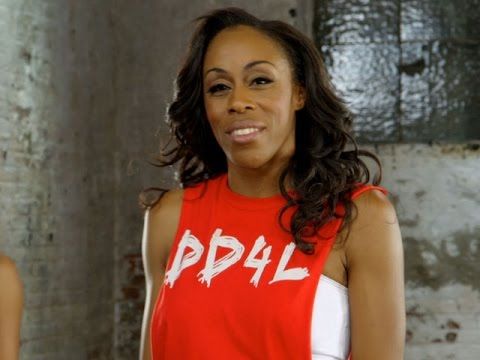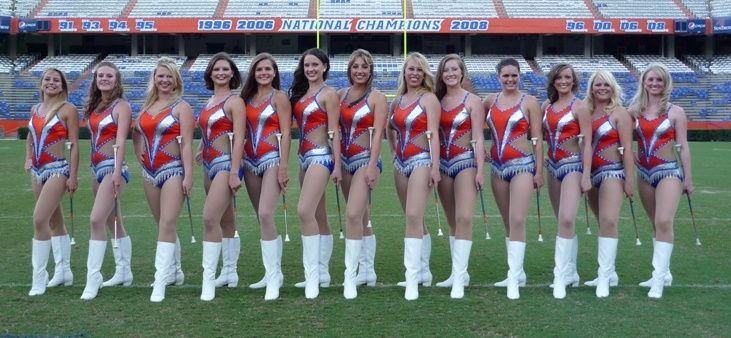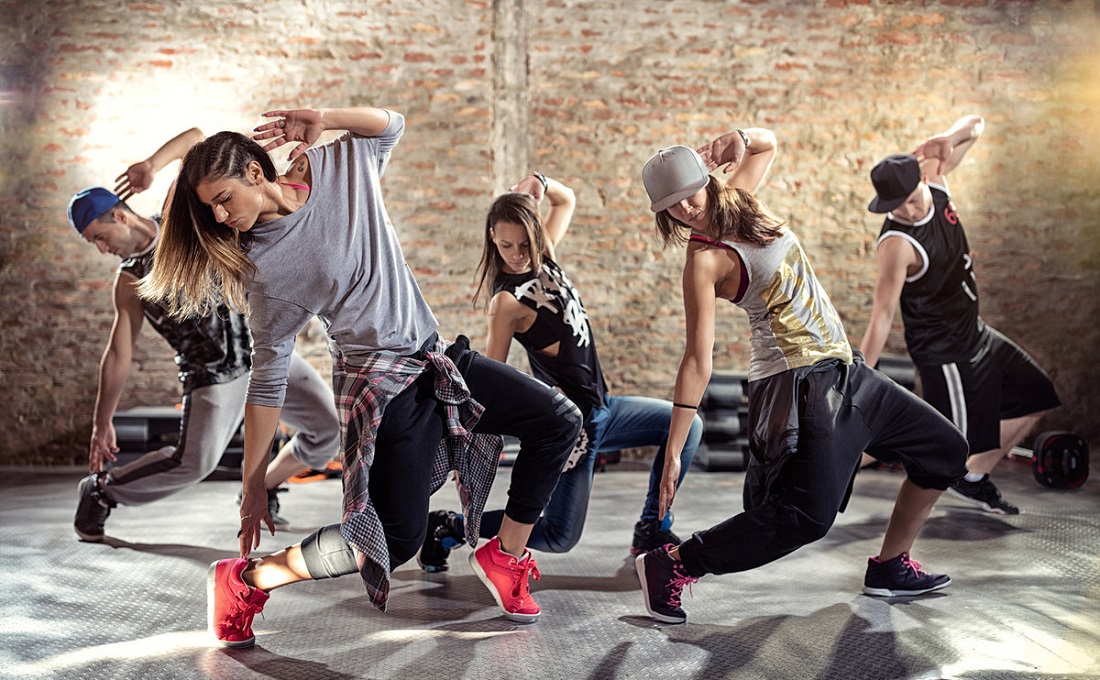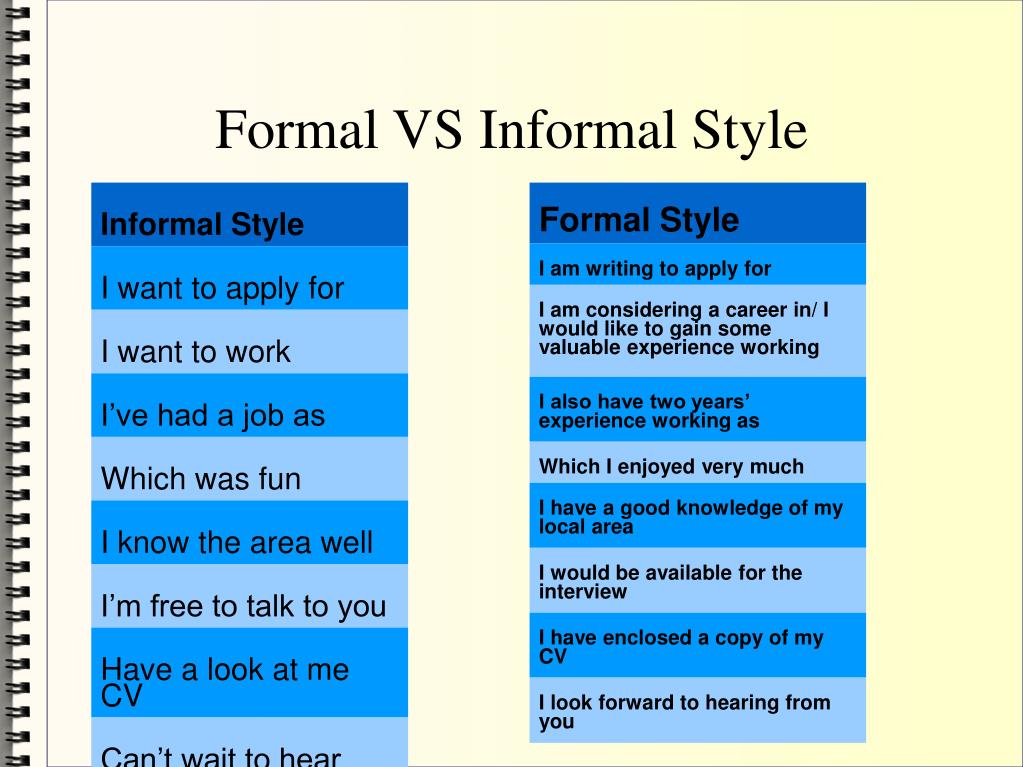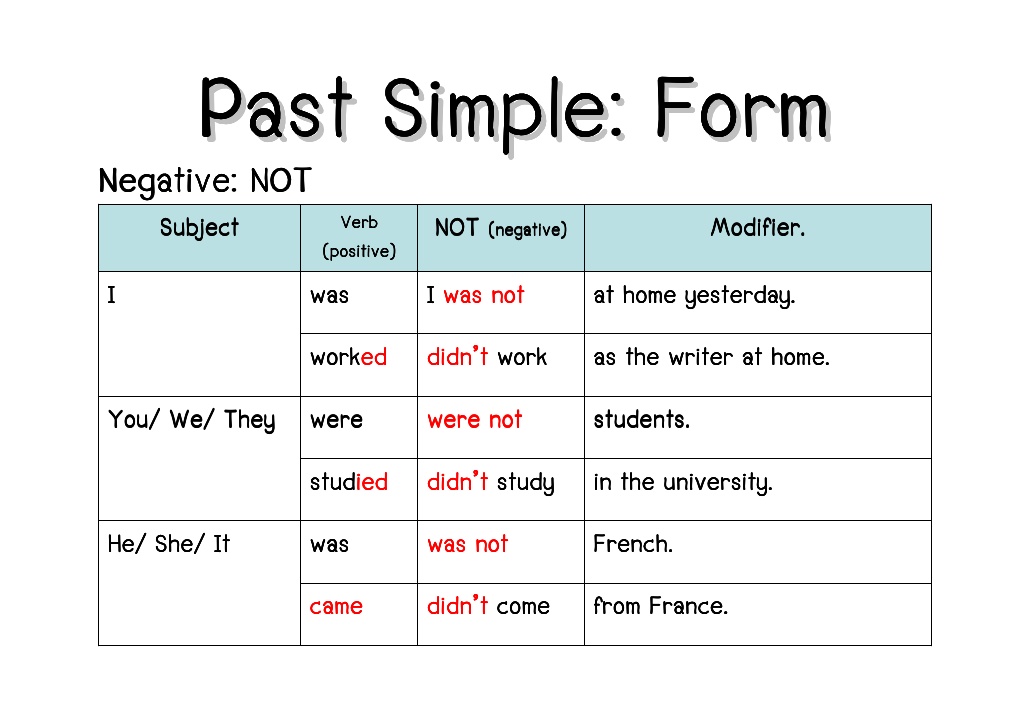How to make your dance teacher like you
31 Things Your Dance Teacher Wants to See You Do
Whether you are a Social Dancer or a Competitive Dancer, you've got a teacher, and they have hopes and dreams that you'll do some of the things listed below. So read on and maybe with a little extra effort you can make your dance teacher cry happy tears on your next lesson.
31 Things Your Dance Teacher Wants to See You Do
1. Keep Your Elbows UpYour elbows in your dance frame should never resemble a middle seat on an economy airline. Business class, First Class, and never econo-smashed class if you want to impress your teacher.
2. Try a Dance RoutineYou may or may not have an allergic reaction to the word "routine", but how about a different word - "script". Yes, to develop smooth transitions and effortless looking movement a (sorry) dance routine, performance optional, is the perfect way to ingrain those skills into your muscle memory. Oh, and working on that (ahem) "script" is a great way to make that routine allergy go away.
Willy Wonka and the Chocolate Factory was as much a tale about chocolate as it was a tale about the power of a gracious, un-entitled attitude. A dance studio can be our chocolate factory, and your teacher wants more Charlies and fewer Veruca Salts.
4. Close Your FeetThis is the dance instructor equivalent of a parent saying "clean your room". So, if you do it when they ask, expect them to cry tears of joy.
5. Try the WaltzIt may not be as sexy as the Bachata, as spicy as the Salsa, or as mysterious as the Tango, but learning to Waltz not only teaches you an iconic dance, but develops posture and poise for all the other dances you enjoy.
6. Avoid Unfair ComparisonsThink of that first time you walked into a gym and compared yourself to every fitness freak you saw.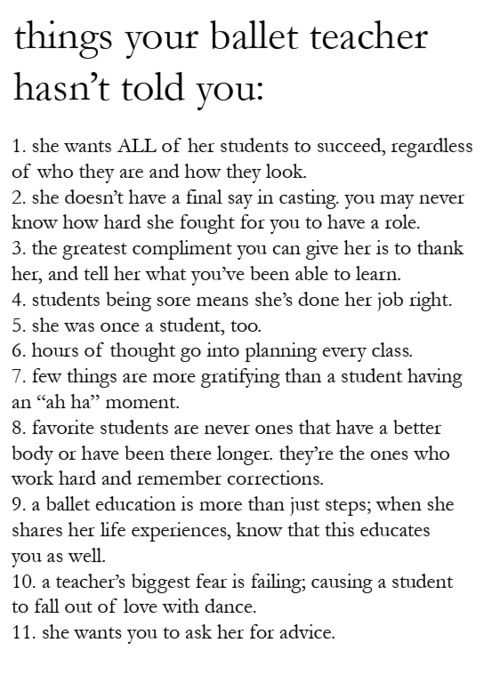 It would be easy to feel demotivated to get in shape if you felt surrounded by six pack abs in yoga pants. In dancing, it's the same thing. We can make unfair dance comparisons that sap our motivation. Avoiding them is easy when you focus on the previous, present, and future versions of you.
It would be easy to feel demotivated to get in shape if you felt surrounded by six pack abs in yoga pants. In dancing, it's the same thing. We can make unfair dance comparisons that sap our motivation. Avoiding them is easy when you focus on the previous, present, and future versions of you.
OK, so this would be the equivalent of voluntarily eating your vegetables at dinnertime as a kid. "Could I have some more broccoli Mom, oh and l prefer it raw so as to not lose any nutrients."
The shock and awe of such a statement could be matched only by the student who asks their instructor if they could spend more time refining their basics.
8. Let the Teacher Do the TeachingIf you are taking lessons as a couple, your teacher can be a relationship coach, but they shouldn't have to be a dance argument referee. Making some agreements as a dance couple ahead of time can help fulfill this request, and keep your lessons exciting and productive.
Sure, at some clubs people don't actually ask other people to dance and, instead, choose to shake, grind, and twerk their business in the personal space of others - but your dance teacher would prefer that you utilize great Ballroom Dance Etiquette instead.
10. Never Ever Say This One Thing"Why didn't you teach this to me before?" to a teacher is like one of the deadly curses from a Harry Potter movie. Some teacher may actually look like they are dying when they hear it. This occurs when there is a breakthrough immediately followed by, what we like to call, "process amnesia".
Not saying this means that you are aware that the skill or step is a part of a process. That developing it is more like Chess than Checkers, and it took the layers you worked on to achieve this result.
11. Share Your Experience
A referral is the greatest compliment you can pay to the studio you take lessons in.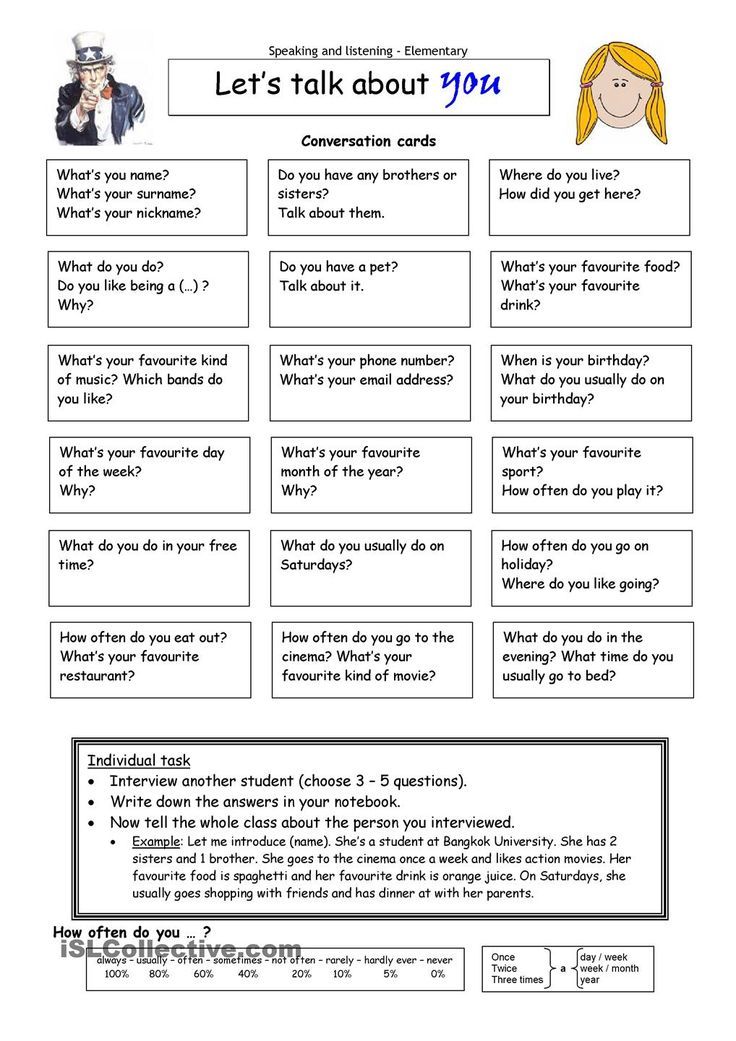 If you are wondering what kind of gift you can give to your teacher, give them the gift of a guest referral and watch their face light up.
If you are wondering what kind of gift you can give to your teacher, give them the gift of a guest referral and watch their face light up.
Your level of note taking can go from "digital casual" with the notes function on your phone, all the way to "sacred manuscript" that looks something like the ballroom dancing version of Dr. Jones' Grail Diary. Either way you go about it, a simple dance notebook is far better than leaving it all up to that incredibly busy, and constantly distracted, hard drive you call a brain.
13. Set Up Your CalendarNo one loves high stress deadlines, especially when it involves your stress reducing dance hobby. The solution - a dance calendar. Just like note taking this can be done digitally or with your favorite Cat of the Month calendar. The sooner you lay out the events, the sooner you and your teacher can deploy a strategy for them.
14. Remember the ProcessAmateur or professional, every dance student will go through a Curve of Learning. Dancing is a skill, and like any skill, there won't always be instant results. This doesn't mean that the process has to be horrible, complicated, or horribly complicated.
Dancing is a skill, and like any skill, there won't always be instant results. This doesn't mean that the process has to be horrible, complicated, or horribly complicated.
15. Work With a Coach
A lesson with a Dance Consultant, also known as a "Coaching Lesson", may be new for some, but will absolutely unlock new and uncharted areas of your dance ability.
16. Graduate!Let's face it, it's pretty normal to be the last one to notice your own dance progress. With that can come some negative assessments that may not be warranted. Graduating in your dance program is proof of progress, pure and simple. Your teacher wants you to graduate, even if it's just so you cut yourself some slack.
17. Show Up ReadyMost people enter the oasis of dancing from a blizzard of work, traffic, or personal stress. That usually involves 10 to 15 minutes for your brain to depressurize and get into dance mode. Unless, however, you can arrive 10 to 15 minutes early. This allows you to do some pre-lesson preparation, take a deep breath, and start your lesson in a zen-like state.
Unless, however, you can arrive 10 to 15 minutes early. This allows you to do some pre-lesson preparation, take a deep breath, and start your lesson in a zen-like state.
Your instructor would rather laugh with someone who is struggling, than work with a skilled dancer who loathes the process. Smiling, laughing, and engaged communication are like currency for teachers.
19. Pay It ForwardAt some point you were the newest of the new students. You're not anymore. Someone in your journey along the way made you feel like you were capable of learning, and encouraged you. Now it's time for you to do the same thing for someone else.
20. Stay Open MindedThere will be plenty of moments along your dance journey where your comfort zone will be challenged. Ballroom dancing has a way of putting your status quo under constant renovation, and it's easy get closed minded to that level of change.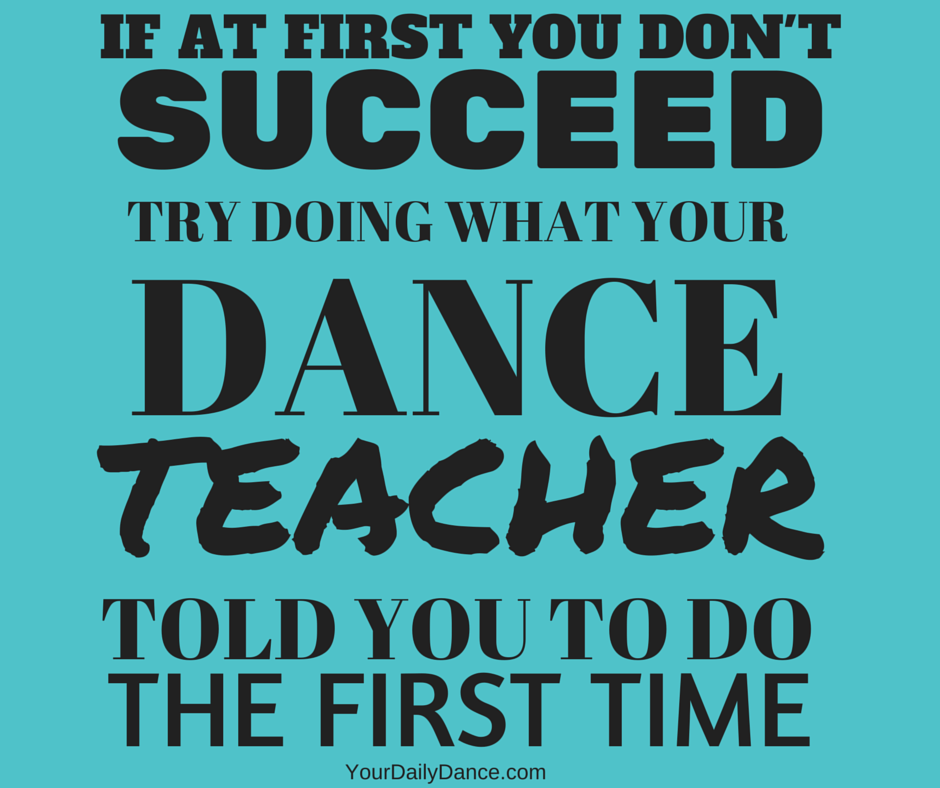 Your teacher wants you to stay open minded. They have your best interests in mind, and anything they suggest is designed to amplify your progress.
Your teacher wants you to stay open minded. They have your best interests in mind, and anything they suggest is designed to amplify your progress.
It may seem like a given, but talking while dancing is the most essential element to Social Dancing. It is also something that, believe it or not, takes a little practice.
22. Quit Believing Non-BelieversFrom time to time you may have some non-dancing naysayers that may question your decision to pursue dancing. Depending on how new you are, or your relationship to them - their words may strike a chord with you that can throw off the joy and momentum of your dance program.
Your teacher wants you to filter those negative voices out because the most important person on your dance journey is you.
23. Eliminate Conspiracy TheoriesCompetitive Dancers can sometimes be the most susceptible to Dance Conspiracy Theories. "Why didn't I win?" and "That judge just must not like my costume" can, unfortunately, mask a dancer's actual progress. Rather than focus on speculation, we recommend reading: 31 Things Dance Judges Want to See You Do.
"Why didn't I win?" and "That judge just must not like my costume" can, unfortunately, mask a dancer's actual progress. Rather than focus on speculation, we recommend reading: 31 Things Dance Judges Want to See You Do.
Until dancers understand that they have to compete against the best version of themselves, then elaborate conspiracies will always be an option.
24. Utilize the Group Classes
Note that the heading says "utilize" and not "replace everything with". Your dance program is built off of The Arthur Murray Unit system: Privates, Groups, and Practice Parties. Using group classes between your private lessons preserves the dance data stored in your muscle memory.
25. Use Practice Parties for Good (Not Evil)Your teachers, essentially, live at their dance studio. So anytime there's a practice party, you're dancing in their living room. Advanced students should utilize the practice party to refine their leading and following, but not to complain or condemn new dancers.
In Ballroom Dancing you're either leading or following. That's your job description. It's like Offense and Defense, Shipping and Receiving, or Peanut Butter and Jelly. The more you dive into the details to make your role work, the more likely you'll see your instructor shed a single tear of joy.
27. Never LeaveOkay, so maybe this is a bit possessive, but your dance instructor never wants to see you leave. Teachers, in any venue, are built to see the potential in their students. They see what they will become, and aren't distracted by where they currently are. No matter how dancing may be feeling, your teacher sees your potential.
They don't want to see you to leave. In fact, they would rather have you tell them what is missing from the lessons, and how they can improve it, than to have one of their students disappear.
28. Have Great FootworkWhatever is closest to the ground is the most important detail in dancing. So, since your feet are the only things actually touching the ground - then good use of the feet is pretty darn important.
So, since your feet are the only things actually touching the ground - then good use of the feet is pretty darn important.
If you were reading a book, but only picked it up once a week, it would be tough to finish it. Recommending that same book would be unlikely, and you can forget any positive reviews of the book on Amazon. Well, that book is your dance development, your teacher is the author, and the sooner you can get through the first few chapters, the sooner stuff starts making sense.
30. Skip the VideosYour dance journey is like a novel that your teachers are writing. Wherever you leave off at the end of your lessons, you teachers want to be able to pick up from there. Going home and watching dance videos, for example, can augment the timeline and rush an intended result that needed more time and individual training. When in doubt, check with your teacher to avoid derailing a process you're on.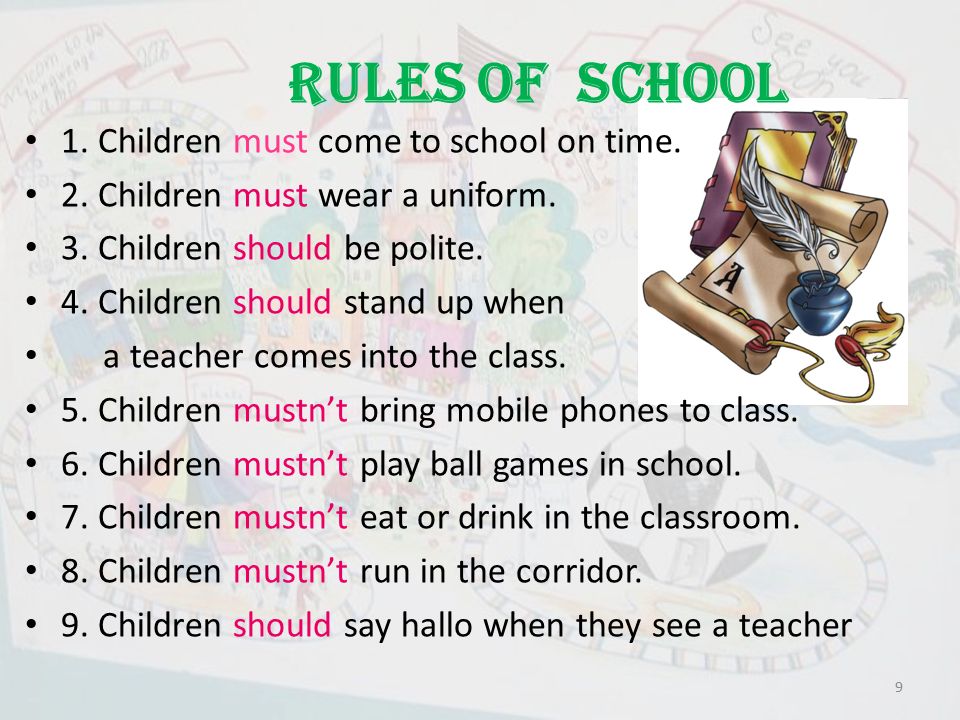
Your teacher wants you to never forget the tipping point that made you walk through the door for your very first lesson. That person whose heart was beating out of their chest, who was so vulnerable to tossing the whole idea aside, and who took a leap of faith to give dance lessons a try - regardless of the dance problems you may encounter today, that person could very easily have stayed home for that lessons, but didn't.
That's how you got here, and that's a big deal to your teacher.
Final ThoughtDance teachers can be pretty demanding, as evidenced by this list. Now consider the alternative - a teacher that demands nothing. You could have a teacher, that's really just a better dancer than you, and isn't really motivated to help you grow, doesn't expect much, and probably feels threatened if you happened to make progress.
So if anything on this list sounds a little familiar... congratulations, your feet are in great hands.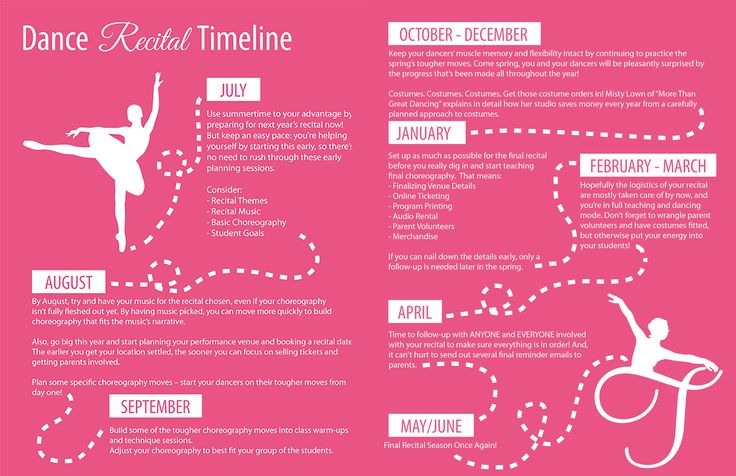
If you enjoyed this article, we would love to include you as a subscriber. You'll receive one email, once a week, with all of our best dance advice.
| Build Your Social Dance Skills with These 21 Challenges | |
| The Beginner's Guide to Ballroom Dance Lessons | |
| What Happens When Your Dance Partner Quits? | |
| Salsa Dancing Questions Most People Are Afraid to Ask | |
| Dance Partners Straight Out of Horror Movies | |
| The 2016 Arthur Murray All Star Championship Results |
Ways to Make Your Dance Teacher Smile! – AB Dance Center
August 26, 2019 admin 0 Comments
Hi Everyone!
At ABDC, we have a fantastic team of teachers who love and support you, and are jazzed (see what I did there??) about seeing you in class every week! Behind the scenes, they are spending hours editing your recital music, choosing costumes, coming up with choreography and planning lessons.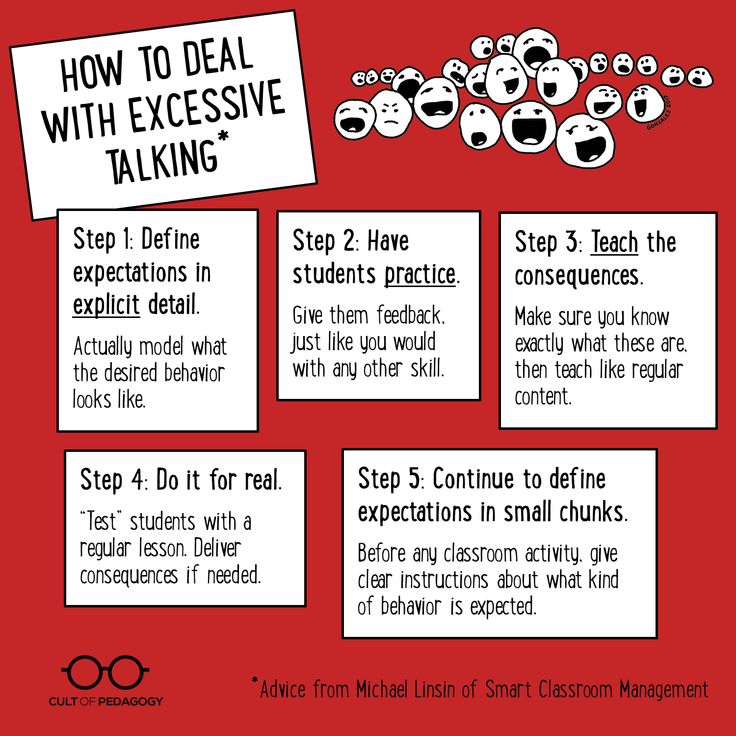 The time you spend with them in class barely scratches the surface of all the time they put in to making sure you have the best possible dance experience! Here are a few ways to make them smile 🙂
The time you spend with them in class barely scratches the surface of all the time they put in to making sure you have the best possible dance experience! Here are a few ways to make them smile 🙂
- Be prepared for class! Nothing makes us dance teachers happier then when you come into the studio dressed to dance-hair up, shoes on, and positive attitude at the ready! Running a few minutes late? It happens! Please take off your coat, put your hair up, and shoes on in the lobby and then sneak into class as quietly as possible! Running full speed into the studio yelling “sorry I’m late” while running across the room to throw your Starbucks cup in the trash distracts everyone (and usually makes us teachers forget what we were doing….oohhhh I remember! Pliés, guys)
- Show us that you’ve practiced! The new step we’ve been working on, your recital choreography, even just remembering where you stood in that last formation we did. It makes us SOO happy to see that you took the time to practice at home, because guess what? We did too!
- Move with purpose! We can get so much more done if everyone does this.
 (Meaning more time for freeze dance, you little Monday maniacs!) . This means if your teacher says “okay guys, can you go to your first spot for your dance?”…..you go there! With purpose. Not like “first I’m going to tell my friend what I had for breakfast, lunch, and dinner every day this week and then I’m going to retie my shoe six times and then I’ll show you my impression of a sloth.”
(Meaning more time for freeze dance, you little Monday maniacs!) . This means if your teacher says “okay guys, can you go to your first spot for your dance?”…..you go there! With purpose. Not like “first I’m going to tell my friend what I had for breakfast, lunch, and dinner every day this week and then I’m going to retie my shoe six times and then I’ll show you my impression of a sloth.” - Listen while we’re talking! We have some knowledge to share. Plus some funny stories, I promise.
- Answer our questions! Please? There is nothing harder than trying to guess what a room full of teenagers is thinking. Well, maybe herding cats. Or trying to get your dog to sit still for a photo. But still, it’s hard. So if we ask “any questions?” it’s because we want to know if you have any questions. If you don’t, a simple “nope” is grand! But staring back at us without saying anything while we try to Jedi-mind-trick our way into your brains makes our brains hurt.
- Please tell us before class if you have a headache, a stomachache, are having a horrible day, or broke your foot.
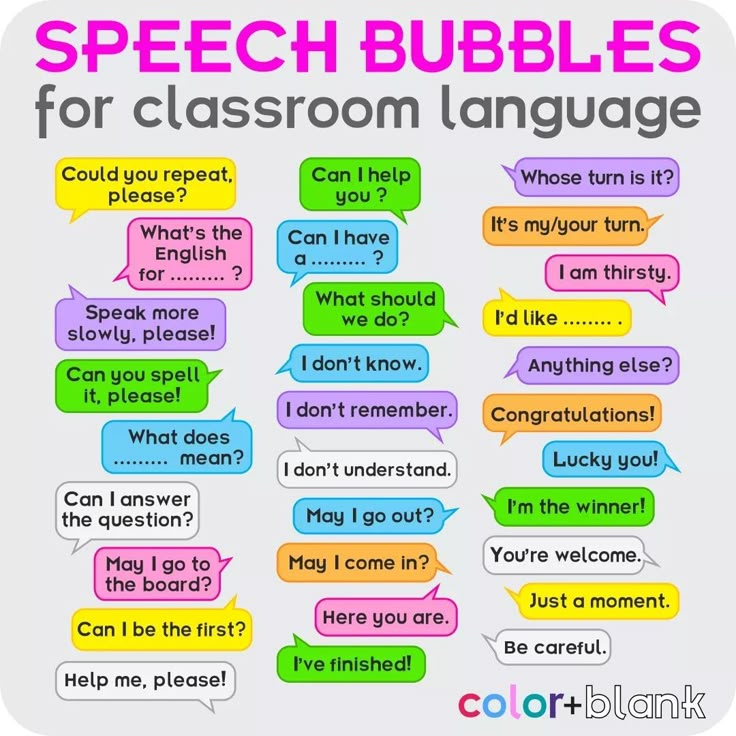 We promise we won’t be mad. But if we don’t know, we’re going to tell you to point your feet, and then when you finally tell us “I can’t, my foot is broken” we feel really bad. You understand.
We promise we won’t be mad. But if we don’t know, we’re going to tell you to point your feet, and then when you finally tell us “I can’t, my foot is broken” we feel really bad. You understand.
Last, but not least…..the number one way you can make your teacher smile? Say “thank you!” after class! It doesn’t go unnoticed, I promise you! Jazz hands are good too.
Happy Dancing!
Share:
Categories:
- Uncategorized
15 tips for those who don't know how to start dancing
After six years of dancing, Masha Botvinina found out whether it is possible to lose weight while dancing, and which part of the body usually hinders the dancer the most. Her advice to beginners is invaluable.
Her advice to beginners is invaluable.
A few years ago, I enrolled in a dance school. Just. Quite by accident I saw an ad in the LiveJournal feed. I didn’t have global tasks like “lose weight here” or “pump up here”. I needed a boring physical activity - and I suddenly decided that dancing was what I needed. nine0004
And recently it suddenly dawned on me: I have been studying for the sixth year. I mentally went over the last few years: I changed 3 jobs and 4 guys, but dancing has not gone away!
Therefore, if you are also starting to dance or are thinking about it, here are practical tips that have been tested on personal experience.
1. By exercising 1-2 times a week, you can completely tone the muscles, pump some up, and some even pump up very well. But not all. Systems that are not involved in dancing (for example, biceps-triceps) will stand out deplorably against the background of those that are involved. nine0004
2. Lose some weight - yes, you can. But radically, you can't.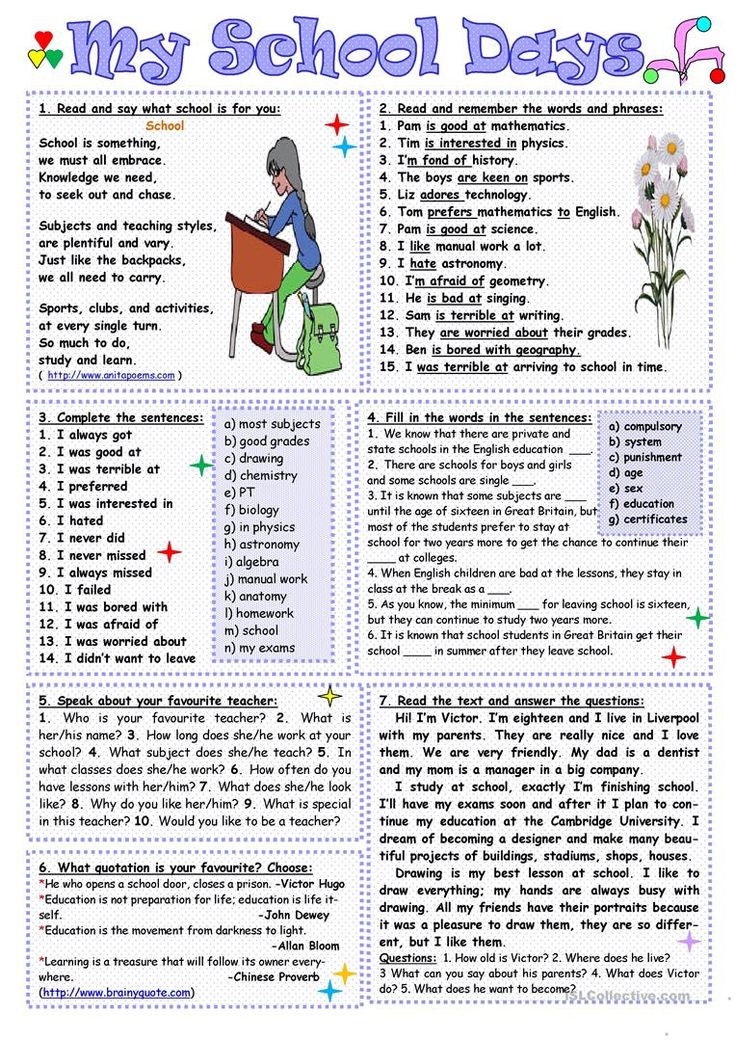 Dancing is not a gym, so you, cheers, will have excellent muscles, and on top, alas, your own fat.
Dancing is not a gym, so you, cheers, will have excellent muscles, and on top, alas, your own fat.
3. All beginners are usually worried about the question “Will I be able to dance cool at the disco later?” It all depends on you and the dance. If you learn to dance hip-hop - and go to a hip-hop club - yes. But my Irish dances will help only in a pub)))
4. Everyone can learn to dance. You too. If your teacher says that dancing is not for you, you can safely burn him with a look: this is not your teacher, and indeed not a teacher at all. nine0004
5. It's never too late to learn how to dance. In modern schools there is no age limit. Even ballet schools have groups for adults. So what do you have to lose?
It's never too late to dance!
6. If you came to the first lesson and your group was full of people, don't be alarmed: a third won't come to the second lesson, because they won't like the unusually large workload. In a month, another third will not come, whose desire to study will be broken by the realization that “like in Riverdance” something did not work out in a month .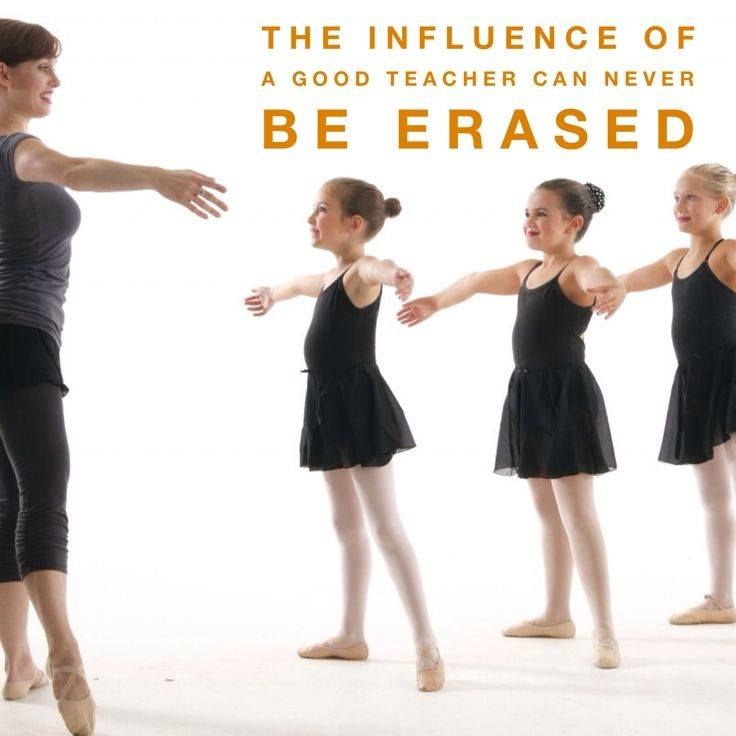 .. Then from those who remained, there will be another third - the rest will stretch something for themselves, break, move to another city or just get killed. This is how natural selection and reduction of groups to normal numbers is carried out. nine0004
.. Then from those who remained, there will be another third - the rest will stretch something for themselves, break, move to another city or just get killed. This is how natural selection and reduction of groups to normal numbers is carried out. nine0004
7. You will most likely have a part of your body that will constantly get in the way and strive to do what you don't want. For example, in my Irish they are hands. Here they are needed to tie shoelaces, but the rest of the time they are not. You may sometimes want to tear them off. At such moments, remember that tying shoelaces with your teeth is not at all comme il faut. And there is also a chance that you will gather for group Irish dances. There are rumors that they move their hands there too.
This is me. I think how hands interfere)))
8. You will most likely need special footwear. If, again, you go to the Irish dances that I go to, you will need at least 2 pairs of shoes: step shoes and soft leather slippers. If you bought shoes and they seem comfortable to you, go to class in them.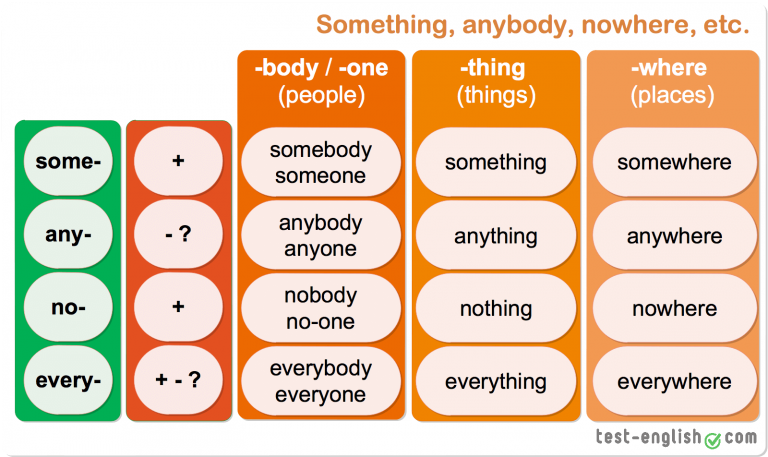 If you still think that they are comfortable, this is not your shoe. When looking at exactly your shoes, you should want to wrap your legs with a band-aid up to the knee. If these sacrifices are not for you, try dancing in sneakers or even barefoot. nine0004
If you still think that they are comfortable, this is not your shoe. When looking at exactly your shoes, you should want to wrap your legs with a band-aid up to the knee. If these sacrifices are not for you, try dancing in sneakers or even barefoot. nine0004
Step shoes, they are also "hard", they are also step shoes
9. After six months of training, you will learn how to pathetically jump over puddles. This is one of the biggest bonuses. However, in a couple of years you will carefully sidestep all the puddles, because for jumping you need to warm up, be in the right shoes, and in general this is a street, not a stage.
10. The subway is the best place to practice turning your toes. In addition, at the sight of your face during this activity, even pregnant grandmothers will give you a seat. nine0004
11. If you saw a colorful glittery dress at a competition and thought that you would never wear such bad taste in your life, just wait. In a year or two, you yourself will choose rhinestones for the same.
Dresses for Irish dances are always “very”: very bright, very shiny and very short
Ballroom dancing also has its own fashion, very peculiar)
12. Dancing competitions are practically the only place where adult aunts can wear crowns, tiaras and rhinestones, and also paint her face so that mom does not grieve. In the end, isn't this a reason to participate?))
13. Judges at competitions are very cunning and can reduce marks because of any garbage. For example, if you have slipped one sock. Cunning Irish dancers for the sake of medals even came up with glue for socks! Now you have seen everything)
Glue for socks is not fiction, but a harsh reality
14. But no, not all. The wig and bun are also an important part of the costume. Do you want to dance on stage with a ponytail?
There are special wigs for Irish dancers with crazy curls
Ballroom dancers make bunches and fill them with a couple of bottles of varnish
15. You will know the taste of victory and defeat. Why not stand on a pedestal, if possible? True, only you will know how hard these places get.
You will know the taste of victory and defeat. Why not stand on a pedestal, if possible? True, only you will know how hard these places get.
At these moments you understand why you need all this
By the way, if one day you decide to participate in competitions, you will most likely have to forget about ordinary rest - your entire travel schedule will be subordinated to the competition schedule. That is why I have been going on vacation in April for the third year, and have not been to the warm sea for about the same amount! And all because in April my dance association - the World Irish Dance Association - holds a big event: World Championships, European Championships and Grade Feis (“Big Competitions”) - and all this cake with candles at once in 3-4 days somewhere in Europe. I don’t participate in the championships yet, but with Grade Feis I have two silver medals 🙂
I didn't have time to attend my own award ceremony due to scheduling problems! I had to climb onto the pedestal when everyone had already left!
For all my achievements, many thanks to my teacher and founder of the Moscow School of Irish Dance Maria Singal — Masha Singal and all the other teachers, because over these 6 years I managed to work out with everyone, and I know for sure that they are wonderful 🙂
I'm sure there are many dancers among our readers.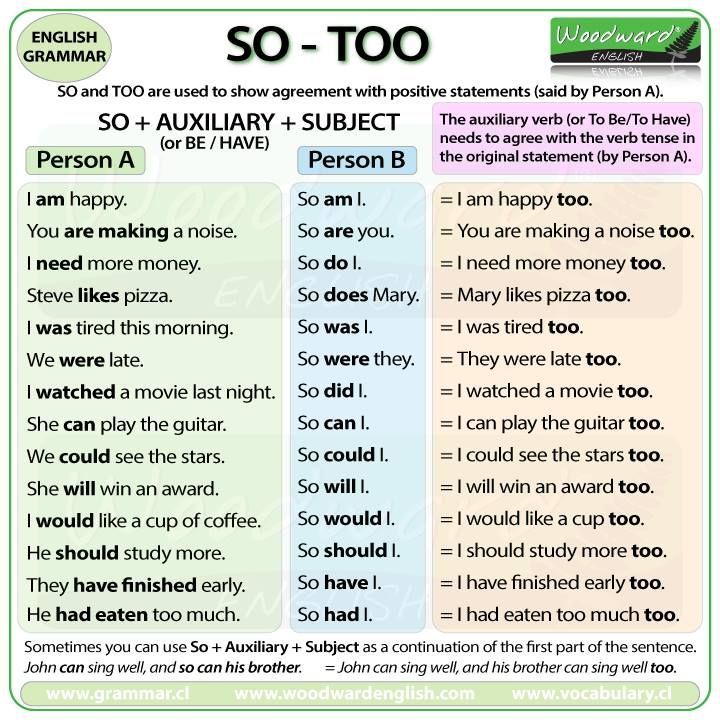 What are you dancing?
What are you dancing?
See also:
- Body ballet reviews
- Aerial gymnastics training
where to study, salary, pros and cons
Author: Professional Guide
Updated by
Dancer is a person of art who performs rhythmic movements to music, taking part in theatrical performances, shows. The profession belongs to the type “a person is an artistic image”, it requires excellent self-discipline and, of course, talent. Children who distinguish literature, physical education, music and singing from all school subjects can become dancers. By the way, the ProfGid career guidance center has recently developed an accurate career guidance test that will tell you which professions suit you, give an opinion about your personality type and intelligence. nine0004
Content:
- Brief description
- Features of profession
- Professions and minuses of profession
- PLASS
- Bessions
- Important personal qualities
- universities
- Tymic schools.
 Comens
Comens - Best colleges and academies for dancers
- Best universities
- Place of work
- Salary
- Salary of a dancer as of December 2022
- Professional knowledge
- Famous dancers
- Examples of companies with vacancies as a dancer
- ballet;
- pop and folk dance;
- historical dance and others.
- Excellent physical development, because dancing strengthens the body and willpower.
- Opportunity to work on the best scenes.
- Talented dancers achieve success quickly.
- The profession is interesting, active and ambitious people will like it.
- Opportunity to earn income from various sources, because dancers work alone or in pairs, can take part in private productions, star in music videos. nine0072
- Useful business connections in the world of art.
- The opportunity to change the field of activity, because dancers often open schools, give private lessons, work as choreographers - the choice of directions is huge.
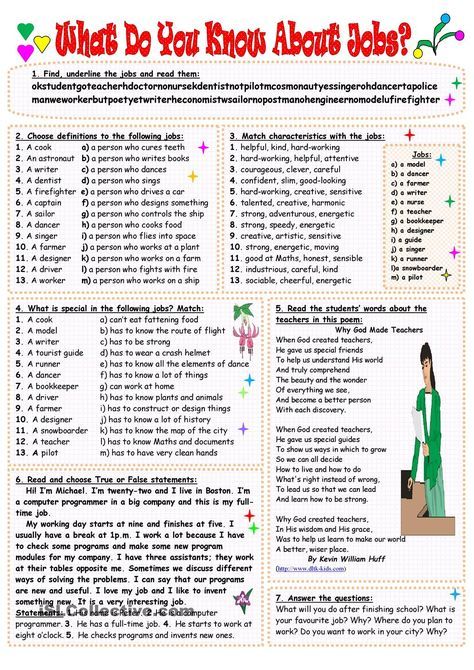
- High injury rate.
- Serious injuries can put an end to a professional career.
- Short career period.
- Very high competition.
- schools and academies of choreography;
- dance studios;
- colleges;
- universities.
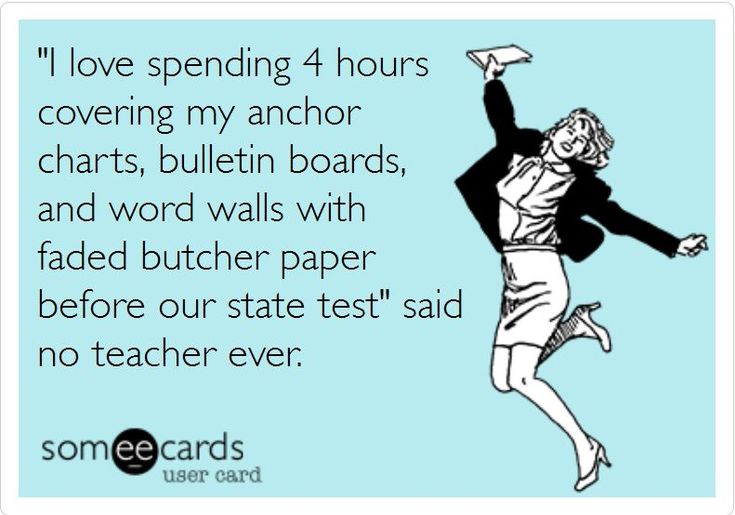
- "The art of dance (by type)", implemented in choreographic colleges and schools. You can start training after grades 7-9, which depends on the requirements of the college;
- The Art of Ballet. The direction of training is open in many creative colleges, studio schools, academies. Children who have completed the 4th grade of the school are invited to study. nine0072
-
4 years
90,000 ₽/year
12 budget places
- nine0002 4 years
158,100 ₽/year
23 budget places
-
4 years
65,000 ₽/year
8 budget places
-
4 years
200,000 ₽/year
16 budget places
- Dance Quarter School.

- School for children "Dancevaliya".
- State 27 Dance Studio.
- ARB im. A. Ya. Vaganova.
- MGAH.
- MCU at the Moscow State Academy of Theater Arts "Gzhel".
- School-studio (school) at GAANT them. I. Moiseeva.
- KMTI them. G. P. Vishnevskaya.
- IPCC. nine0072
- GITIS-RATI.
- MGAH.
- ARB them. A. Ya. Vaganova.
- Russian State University A. N. Kosygin.
- ISI.
- UGAI.
- SPbGUP.
- AGIIK.
- KemGIK.
Brief description
This profession has a rich history and is closely associated with the arts. However, the success of dancers by more than 50% depends on dedication, endurance, self-discipline. A specialist can work independently, performing solo choreographic numbers, it is also worth highlighting pair and collective dances. There are a lot of types and techniques of this art direction:
See also:
Also distinguish styles such as street jazz, hip-hop, R'n'B, contemporary dance, street dance, etc. Dancers choose the style and type of performing arts based on their physical abilities, temperament, personal preferences.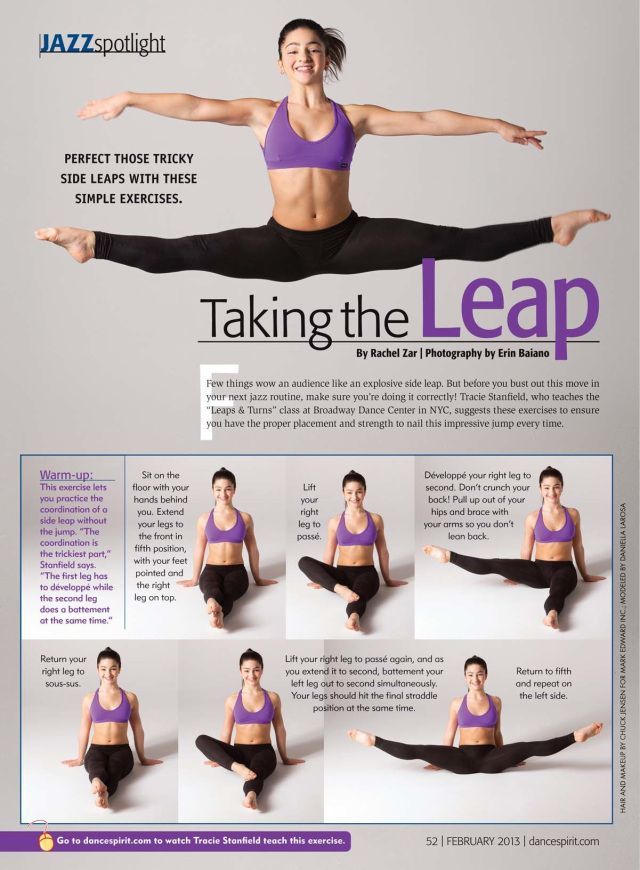 On stage, they create artistic images, convey emotions, making the hearts of the audience tremble. nine0004
On stage, they create artistic images, convey emotions, making the hearts of the audience tremble. nine0004
Features of the profession
Anyone can become a professional dancer, but it is worth starting training in childhood. Choreographers recommend giving children to dance studios at the age of 3-7 years, which will allow them to develop good posture, plasticity, stretching, a sense of rhythm and other skills necessary for professional performance. Dancers most often work in 1-2 overlapping styles, they pay special attention to training and rehearsals, maintaining excellent physical shape. A career is short, because its peak is at the age of 15-25 years, and after 30 years, most specialists change their field of activity. They can realize their talent and knowledge in other areas, working as directors, choreographers, school teachers. nine0004
Dancers independently or under the guidance of a choreographer create performances: choice of music, sequence and rhythm of movements, costumes and image, facial expressions, plasticity. Before performing the dance, they rehearse for a long time, honing their skills. Many members of this profession often travel around their native country and travel abroad, where they give concerts. The activity is associated with certain difficulties, which leaves an imprint on the lifestyle and character of the dancer. nine0004
Before performing the dance, they rehearse for a long time, honing their skills. Many members of this profession often travel around their native country and travel abroad, where they give concerts. The activity is associated with certain difficulties, which leaves an imprint on the lifestyle and character of the dancer. nine0004
Pros and cons of the profession
Pros
Cons
See also:
Important personal qualities
Dancers have excellent plasticity, but in this profession not only technical performance is important, but also emotionality. The dancers convey the idea of the performance with the help of movements, facial expressions, so they must be distinguished by well-developed artistry. Increased efficiency, resistance to physical stress and a low pain threshold are very important, because rehearsals and performances often end with sprains, dislocations and other minor injuries. nine0154 Only those people who do not suffer from laziness, negligence, excessive self-confidence ascend to the pinnacle of success.
Training for a dancer
Professional education can be obtained in various institutions:
There are no special requirements for the education of a dancer, the level of his skill is determined during choreographic tests. nine0086 It is worth starting training at a young age in order to reach a professional level. Let's consider the most interesting directions:
You can also go to study at a university, choosing a specialty related to choreography, folk dance and other areas. Primary training can be obtained in public and private schools of choreographic art, during individual lessons.
Universities
Best Primary Schools
Best colleges and academies for dancers
Best universities
See also:
Place of work
Dancers are in demand in theaters, film industry and organization of holidays and events. They can work as teachers, find vacancies in nightclubs, private groups - there are many options for employment. nine0004
Salary
There is no exact tariff rate in this segment, because everything depends on the style in which the dancer works, personal qualities, education, reputation and experience.
